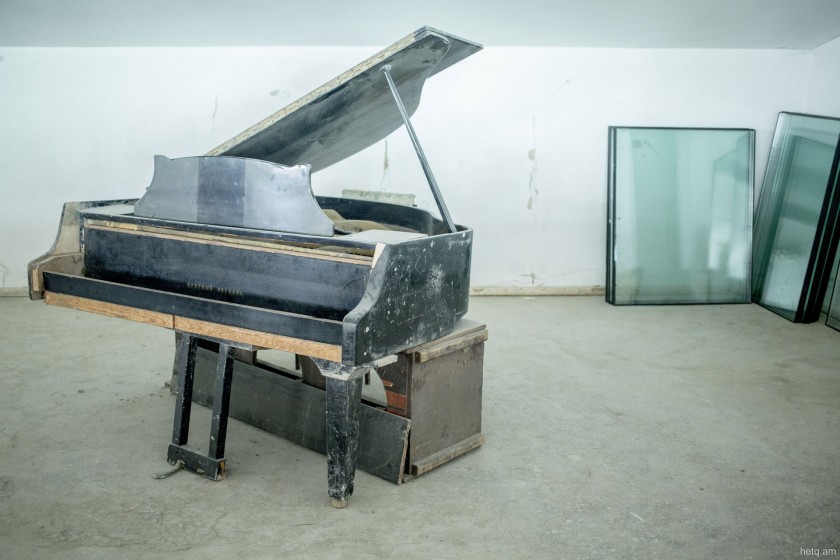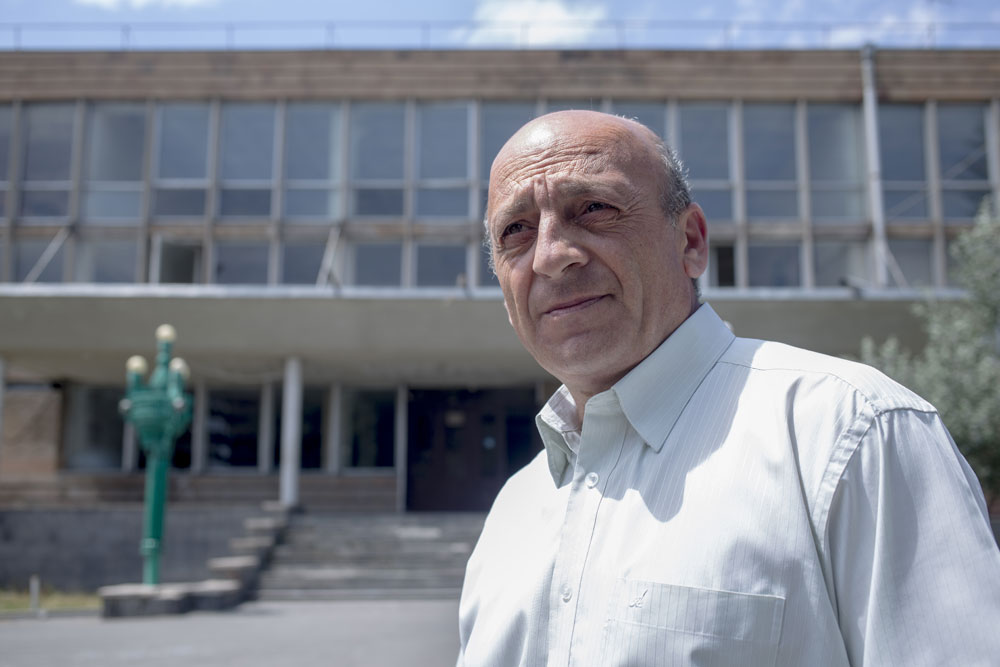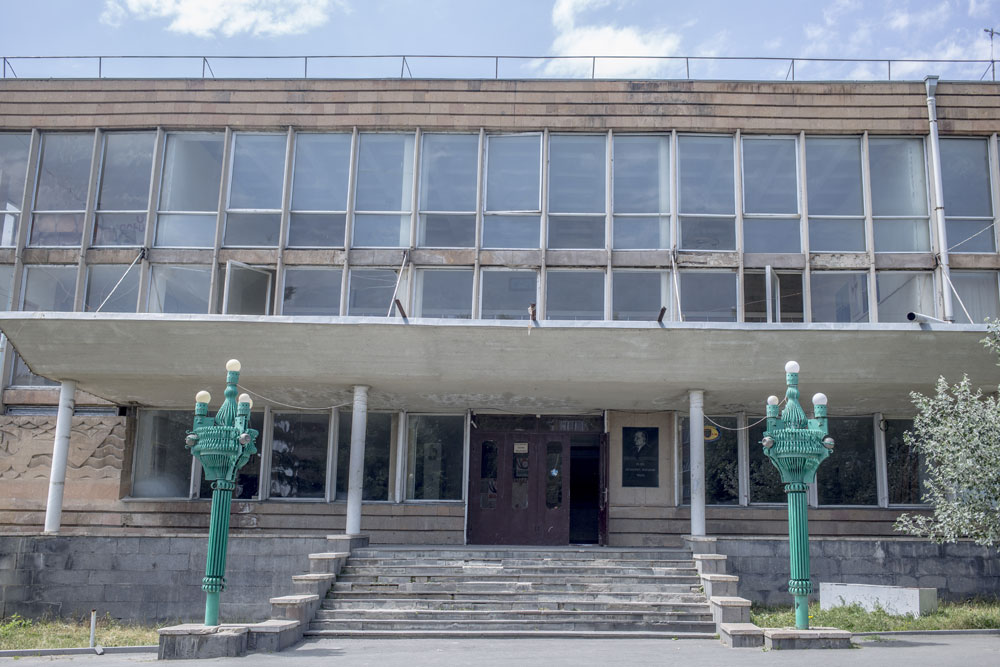
Sevan’s Depressed Cultural Scene: Seven Organizations Under One Roof
Amalia Margaryan
Speaking about the lack of a vibrant cultural life in the town of Sevan, writer and public commentator Hrach Beglaryan notes that everything today has been commodified.
“Culture and humans are the two sides of a scale. We’ve become slaves of materialism and have neglected culture in the process. Cultural life in Armenia is centered in Yerevan. The town of Sevan is only 45 kilometers from Yerevan, but we’re a world apart,” Beglaryan says.

Architect Vigen Hakobyan says that Sevan should have become a major town over the years; a modern tourist center to service and welcome visitors.
Hakobyan notes that, on the contrary, Sevan is gradually getting smaller.

“When I got a job here, Sevan was in pretty good shape. Now, I’m upset over what it’s become,” says Beglaryan, adding that nevertheless there are artists and young people who are trying to move the town forward. He says that these people need to be assisted financially.
Beglaryan remembers a time when the town had a theater and a choir. Residents had places to unwind and participate in cultural activities after a day of work.

Today, the only operating cultural center in Sevan is the Souren Zakaryan Community Cultural Palace. Under its roof are housed the Community Cultural Center, a central library system, the Sevan National Park’s Museum of Geology, an art school, a veterans’ club, a branch of the Henrik Igityan National Centre of Aesthetics, a boxing hall, and the Sevan Youth Club.
Ishkhan Khachatryan, director of the cultural center, says that since there are no suitable spaces in the town, more than seven organizations share the one space.

The center has a 500-seat auditorium, but it’s only open eight months out of the year. It’s too cold the rest of the year, even when gas heaters are brought in. Khachatryan says that parents don’t send their children to performances or other events because of this.
Pointing to large pots behind the stage to collect water which leaks from the roof, Khachatryan says the roof was repaired in 2002, but that it needs further work.
Armen Zohrabyan, who heads the Gegharkounik Regional Administration’s Department of Construction, says that 295 million AMD was allocated to renovate the Palace of Culture, and that work began last year. He doesn’t know when the work will be completed.
Khachatryan adds that in addition to renovating the building, new equipment and fixtures are needed.
“I danced on the stage at the age of five. The wood floor hasn’t been upgraded since,” he says, adding that the staff is woefully underpaid. If wages increased, he believes cultural life in Sevan would rapidly take-off.
A One Room Museum
The Sevan National Park’s Visitor Center is located in the back of the Cultural Center. On display are the flora and fauna of Gegharkounik Province and household artifacts dating to the pre-Urartu period.

There’s no sign in Sevan promoting the Visitor Center to tourists. Tour guides are the only ones promoting the place.
Those wishing to visit the museum must walk through construction debris and climb a dilapidated stairway.
Displays are crammed into the one room museum/visitor center. A wrong turn just might send one of the stuffed animals crashing to the floor.

While Emma Kocharyan, the center’s director, laments the lack of glass enclosures and improper lighting for the exhibits, she’s hopeful that conditions will improve once the renovations are complete.
Photos: Davit Banuchyan
 Videos
Videos Photos
Photos




Write a comment